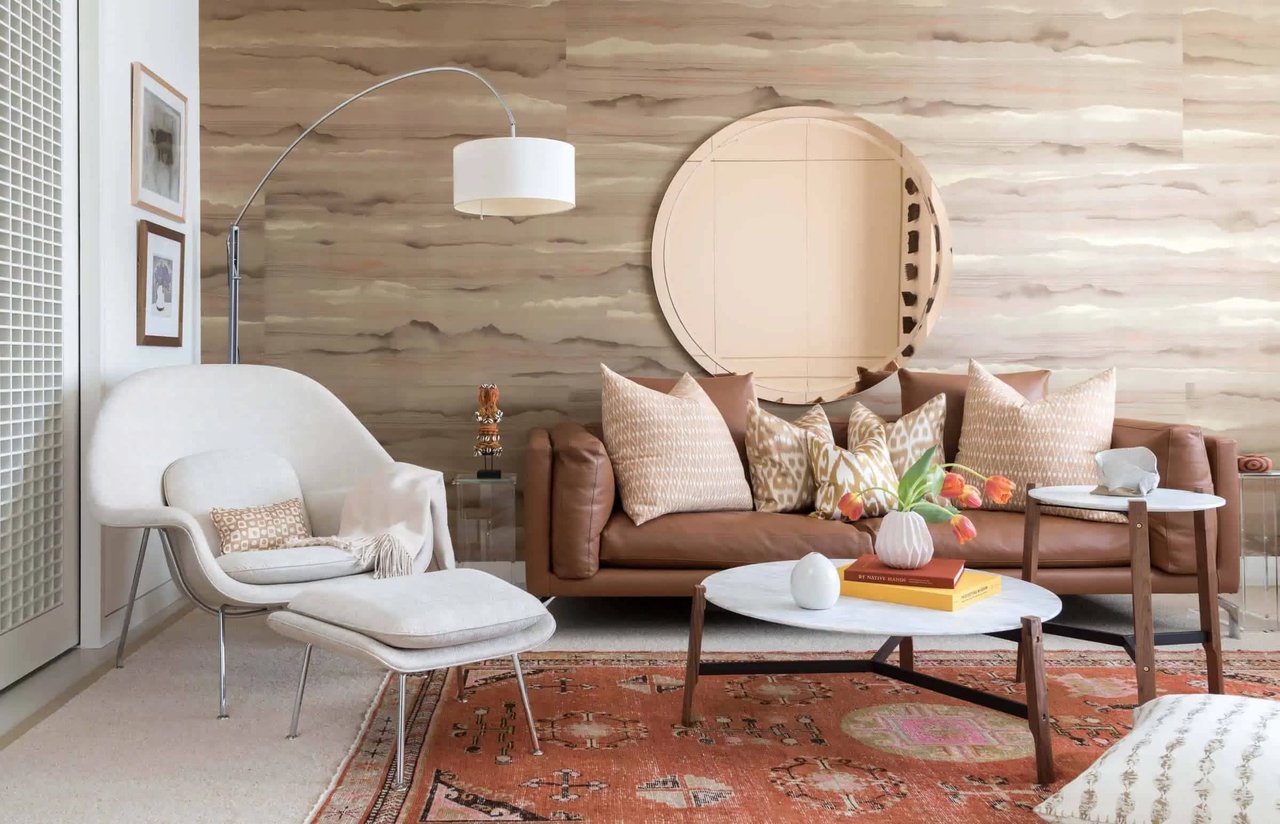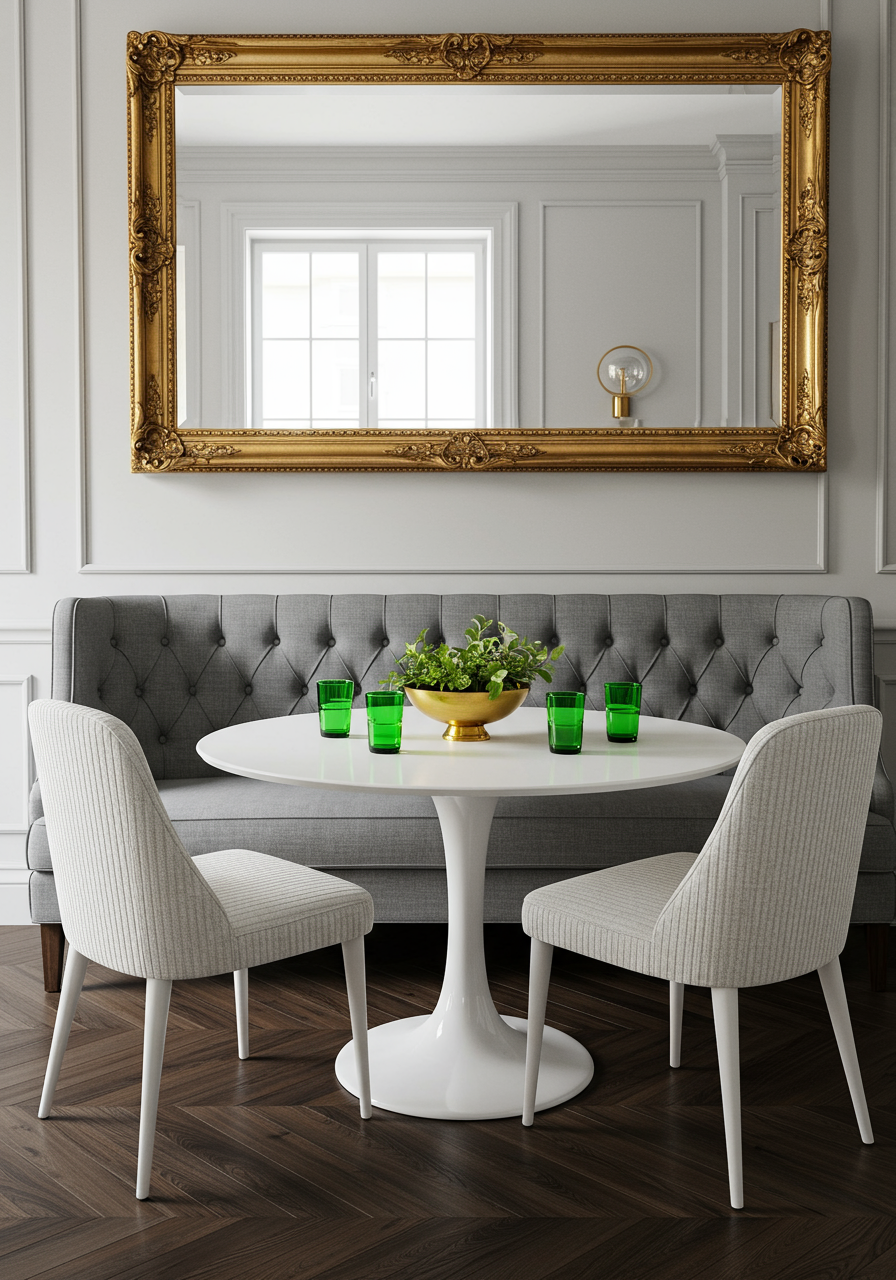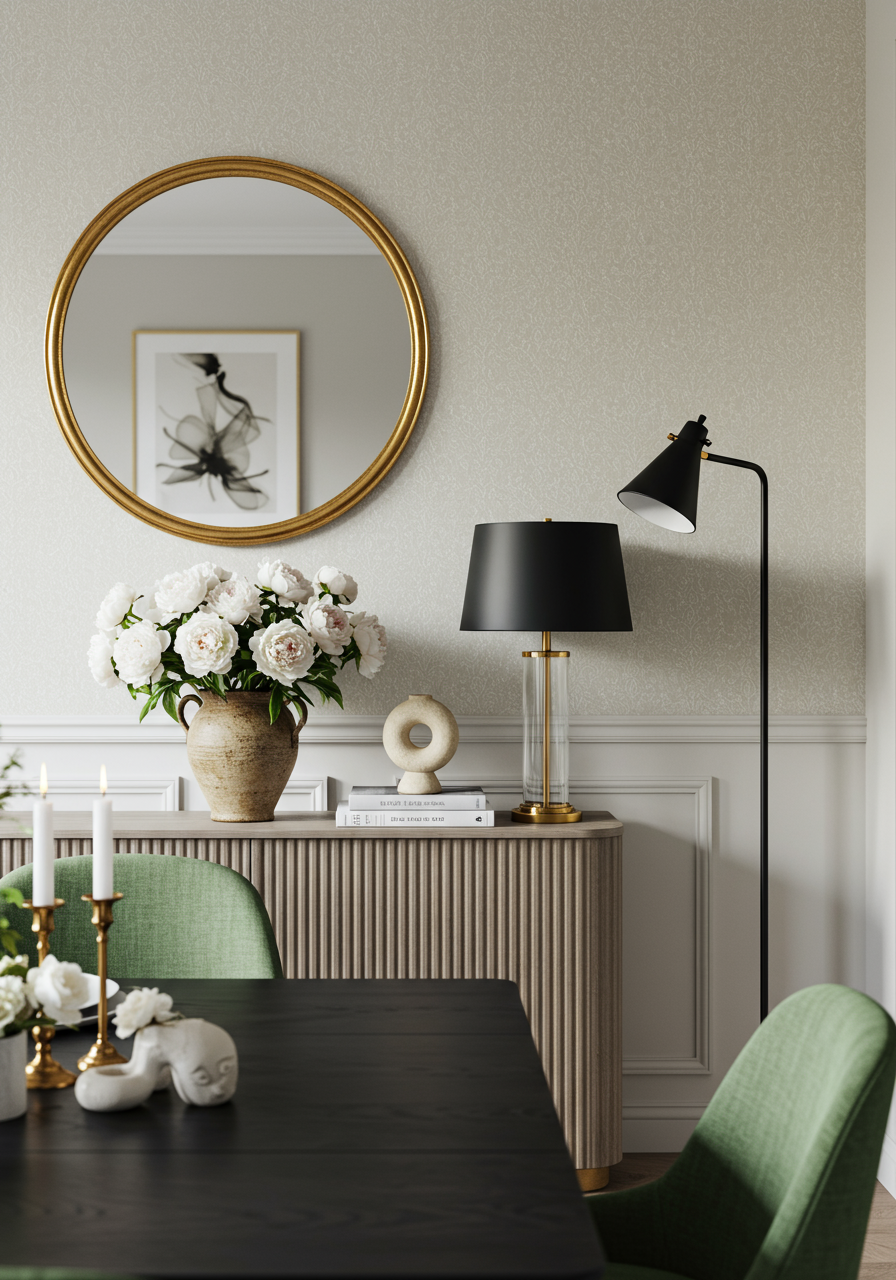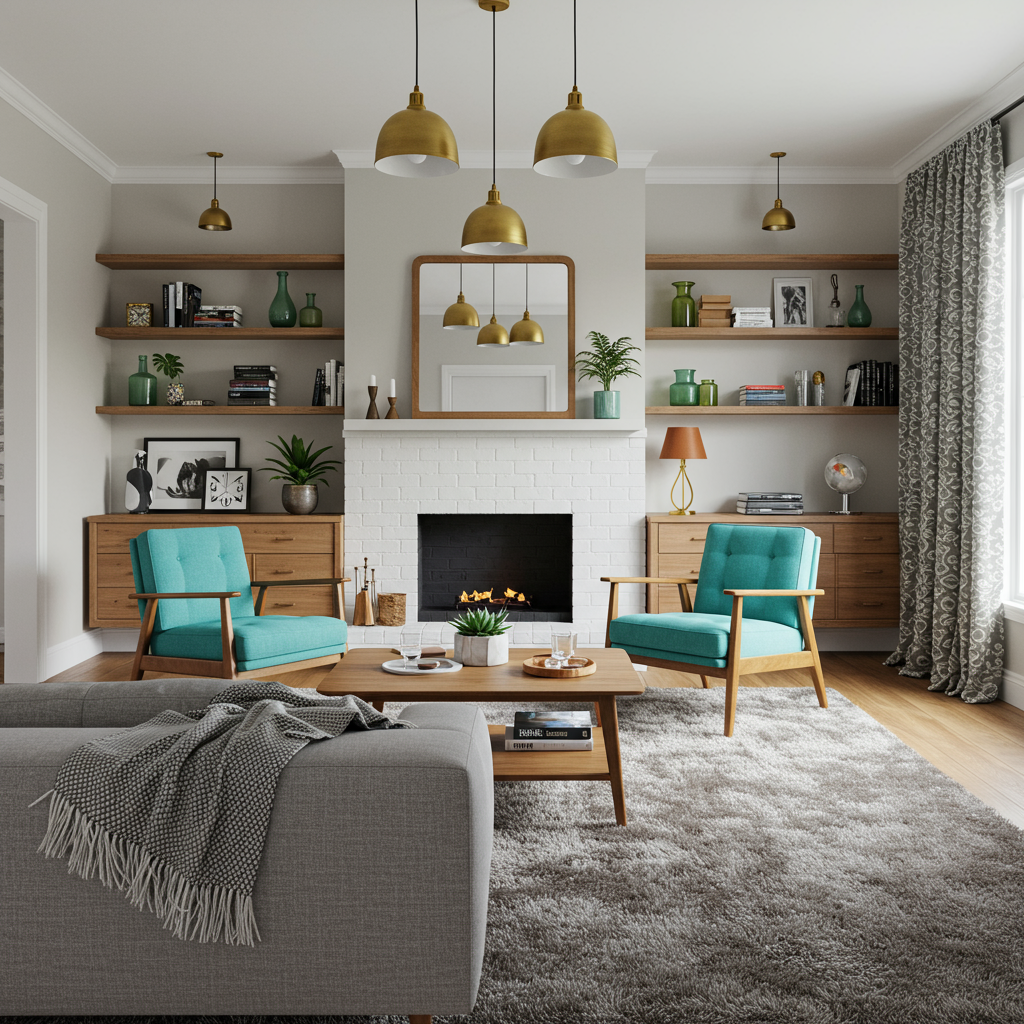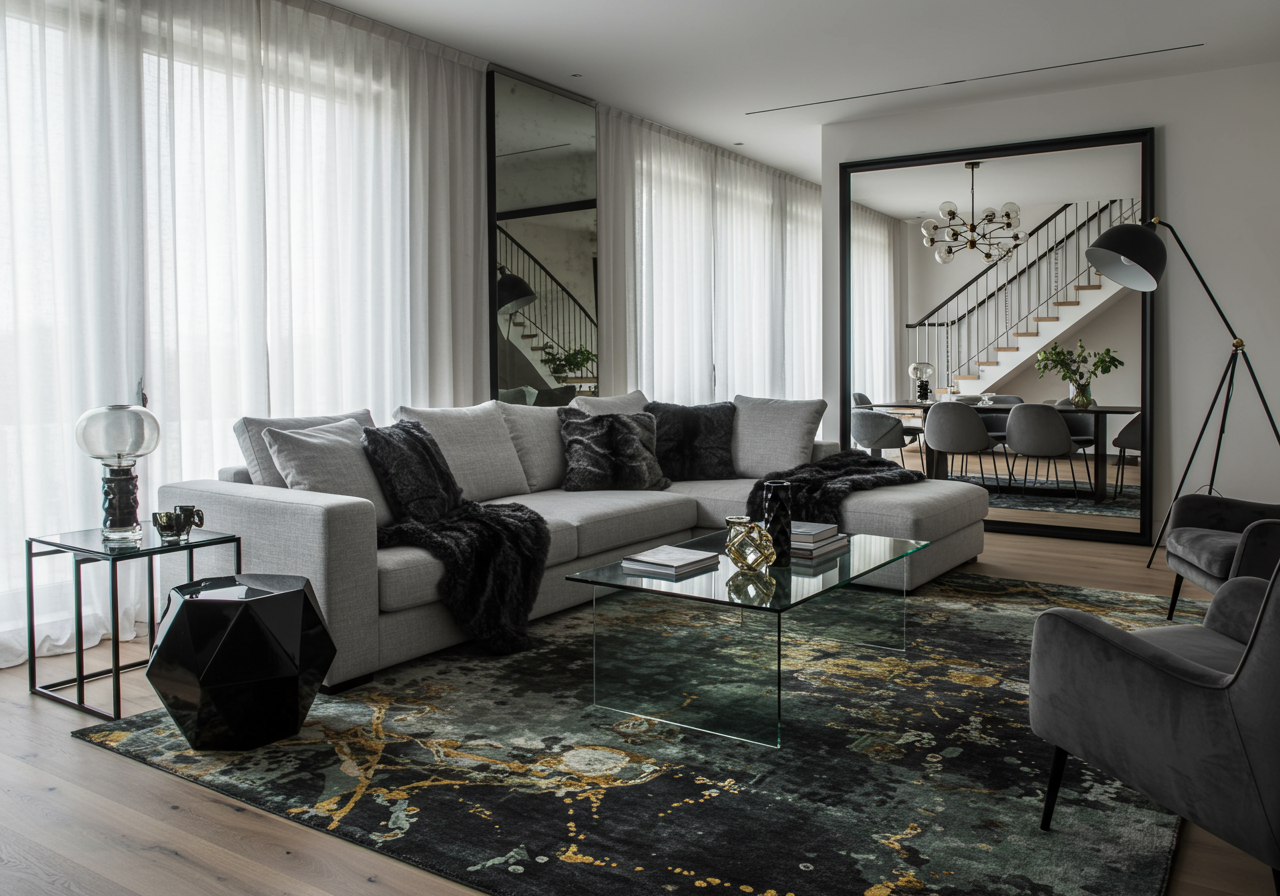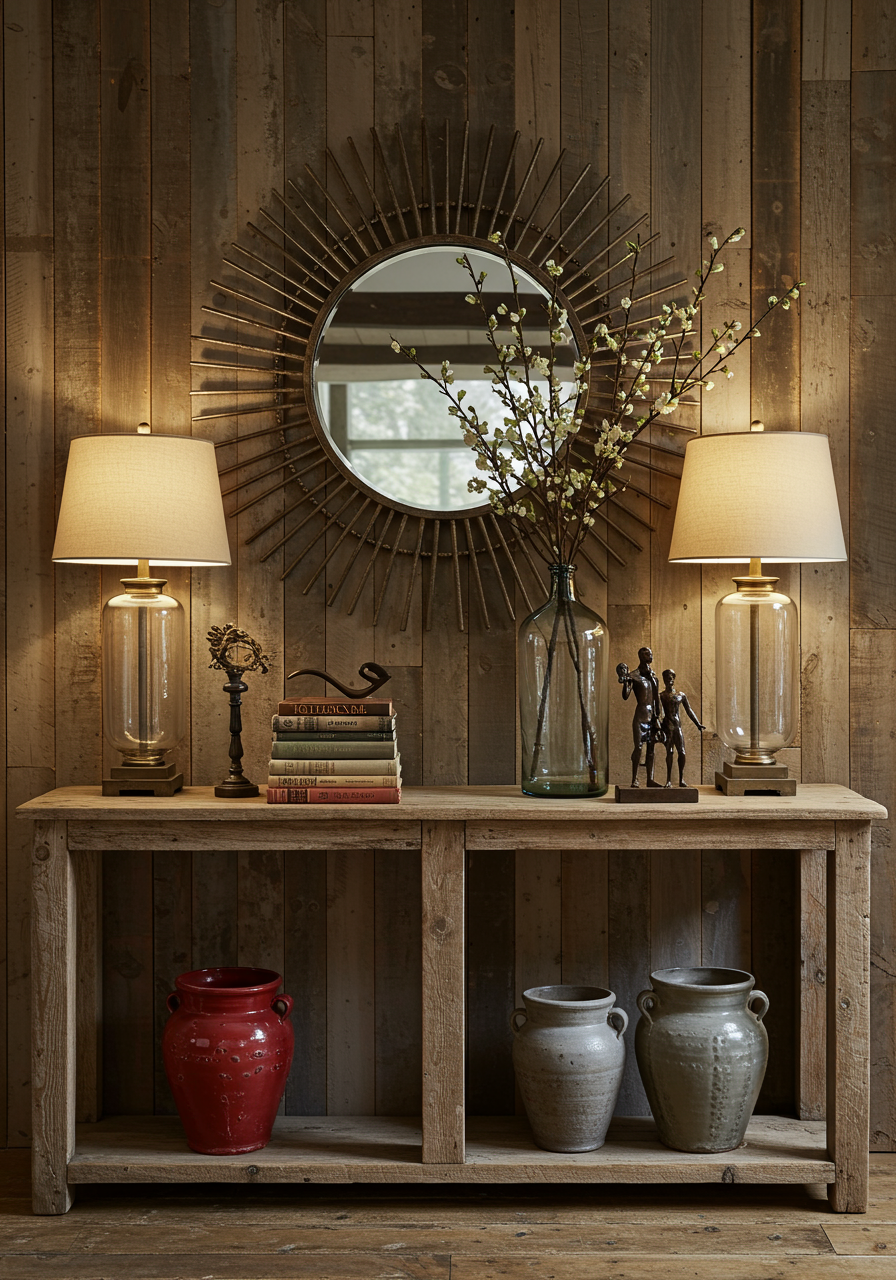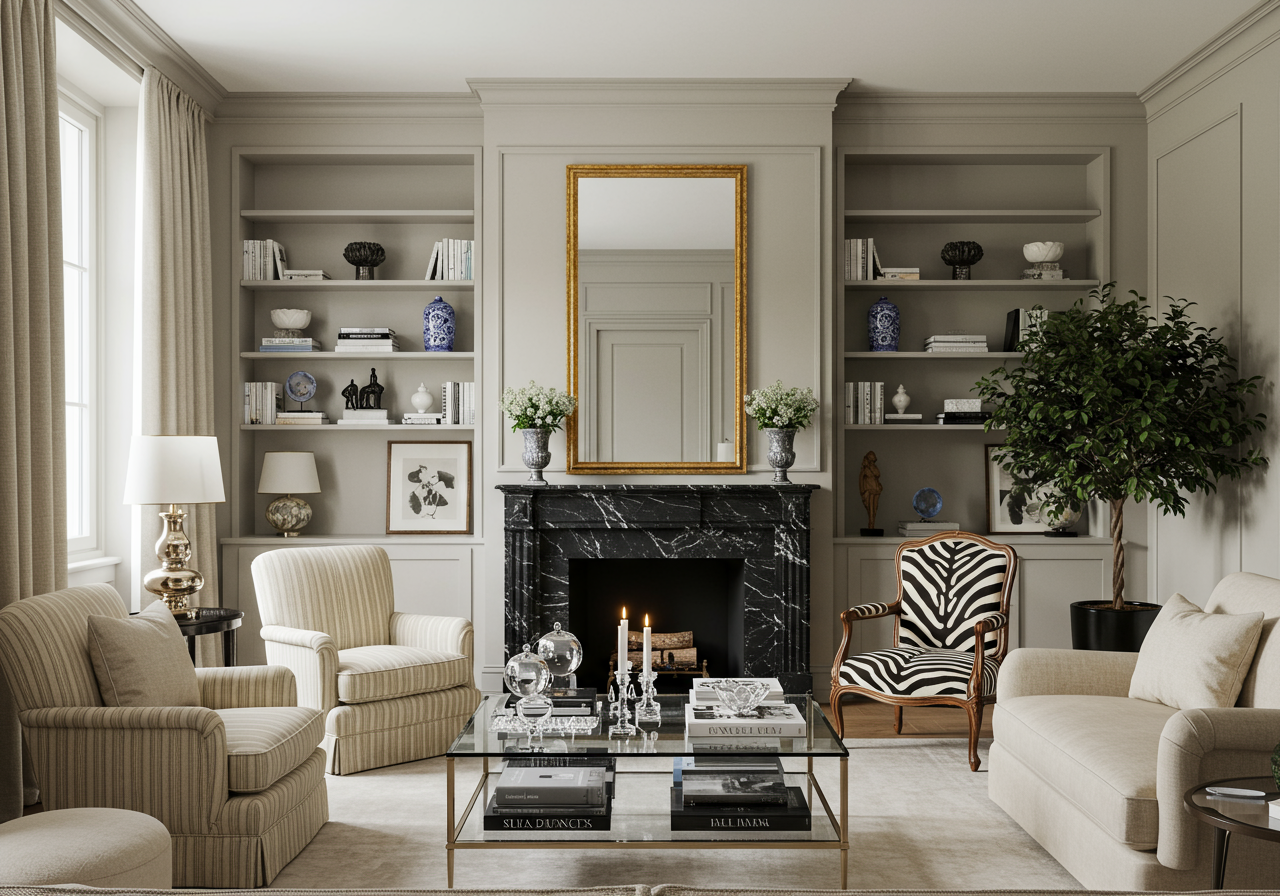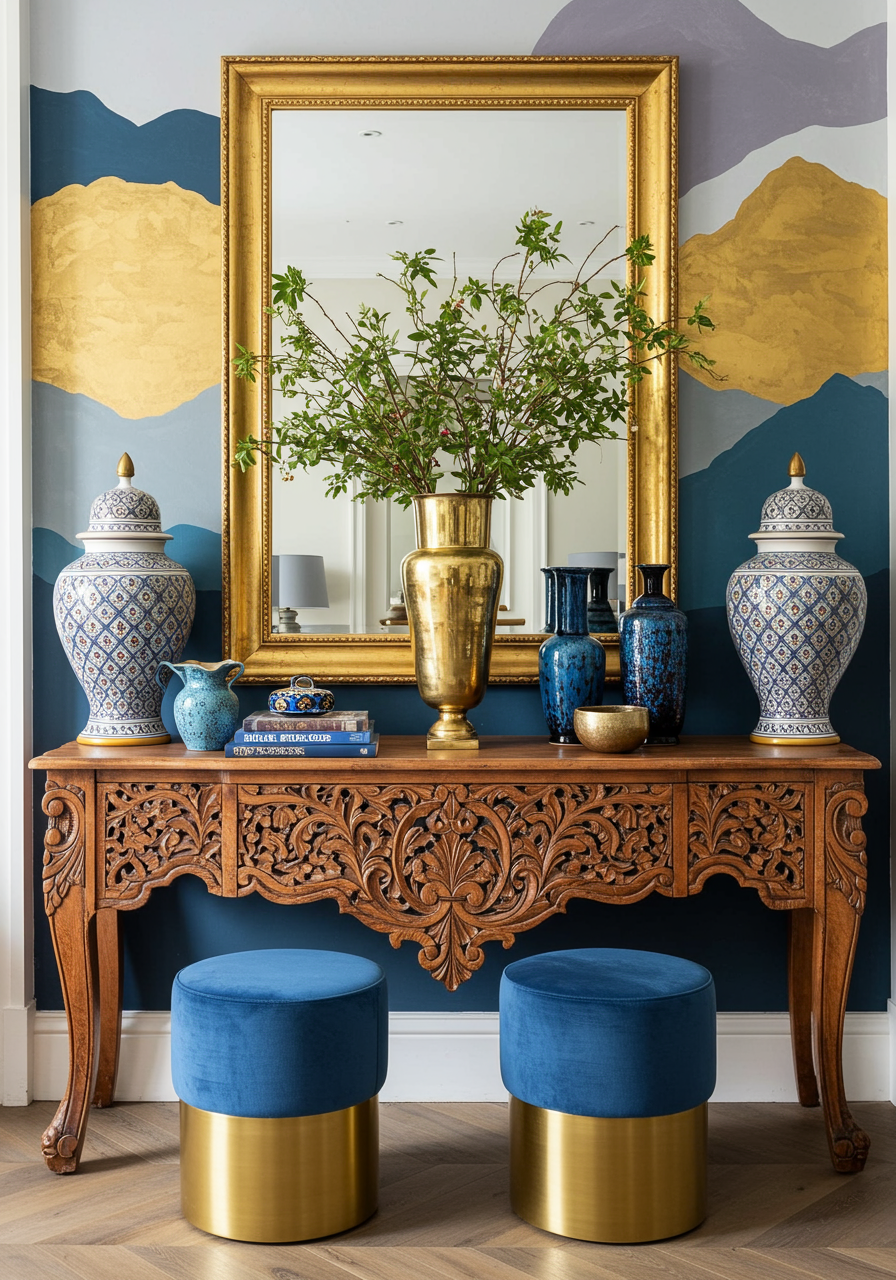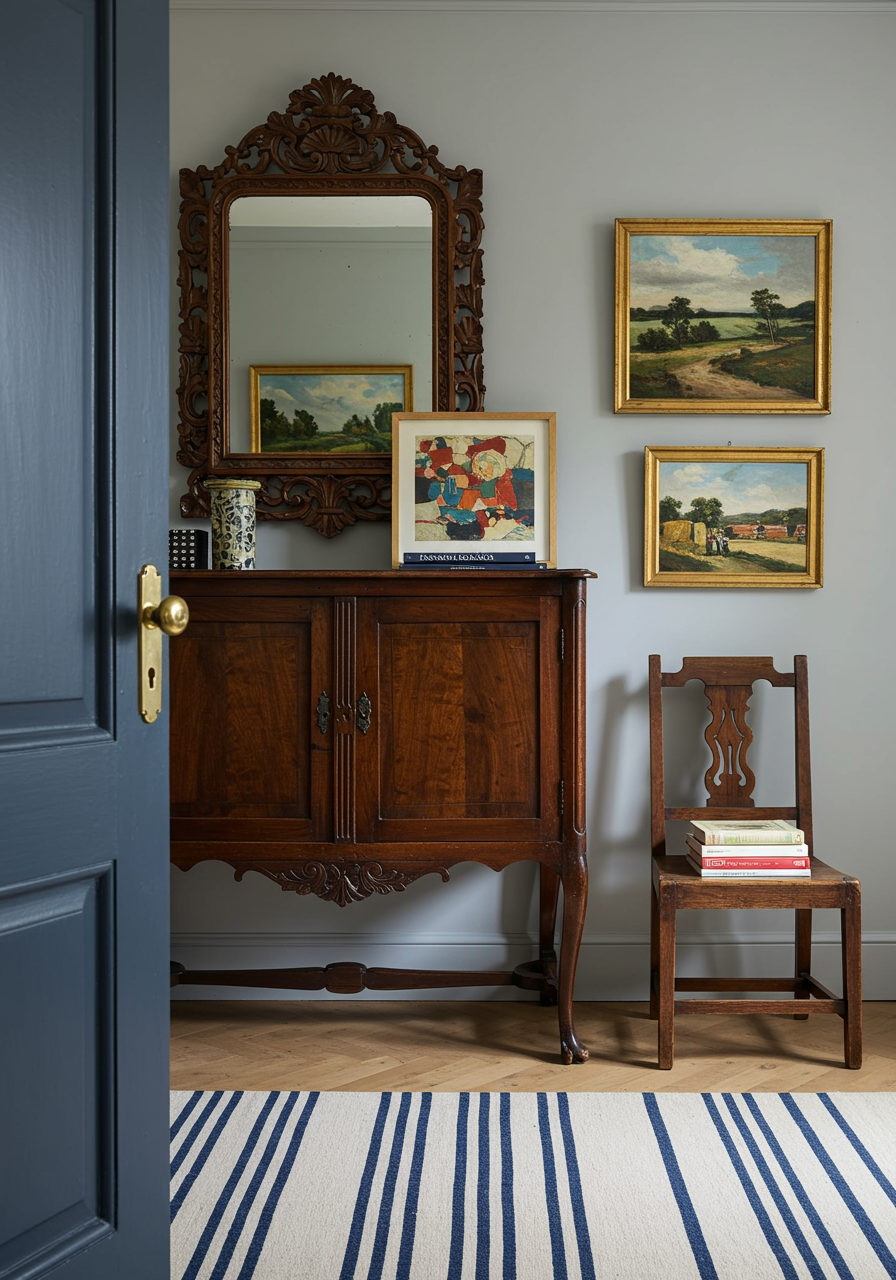Mirrors are one of those special design elements that can do double or triple duty around the home. In addition to opening up smaller spaces with their reflective surfaces, they can act as a focal point for a design, fill up large spaces, cast light around the room, and more (little-known fact: You can even see yourself in them, too). And since they come in every shape and size imaginable — with gorgeous
vintage or
new options available — there’s a mirror for every space.
USE MIRRORS AS A FOCAL POINT
Every design needs a point of focus, and mirrors — like art — are a perfect way to do it. The most common use for mirrors is to make a space feel bigger, but they can actually do both equally well, as designer Laura Umansky of
Laura U points out. “Mirrors are well-known for their ability to make a room feel larger, but they also act as a focal point,” says Umansky. “This high-rise living space benefits from the mirror’s airy reflection, as well as its ability to ground the other rounded shapes in the room. The eye loves objects grouped in threes, and having this central piece grabs the gaze in a very pleasing way.”
LAYERING ISN’T JUST FOR WINTER CLOTHES — OR RUGS
We’re big fans of layering rugs to bring multiple styles together and create an extra sense of coziness, but did you know it can also work with mirrors? It’s a specialty of designer
Denise McGaha, who uses the technique to cast additional light into her spaces. “Mirrors are my favorite way to reflect a special feature in a room,” McGaha says. “I also love to use them to bring light into dark spaces and corners. I love a layered mirror and will often mirror a wall in a niche or over a bed and then hang another mirror on top!”
VINTAGE FOR THE WIN
We at Chairish can’t hide our love of vintage and antique pieces (and as you may have noticed, we’re not really trying). We’re always excited when designers like Jenny Taylor of
August Taylor Design feel the same way. “This unique vintage mirror from Chairish was the perfect finishing touch in the dining room,” Taylor says. “The mix of lucite and brass added a unique sculptural piece of art to the room, while the mirror brightened the space and opened the room up. We love adding mirrors to rooms because they double the light, make the space feel larger while also decorating wall space.”
SALVAGE SOMETHING SPECIAL
An appreciation for vintage and salvaged pieces was a common theme with a number of designers, including Rebekah Zaveloff of Chicago-based
KitchenLab Interiors. Zaveloff used an older mirror to add a touch of the past to a more modernist space she developed. “We used a salvaged fireplace surround with a mirror that we found completely intact at Columbus Architectural Salvage in order to bring back some vintage charm to this brick workman’s cottage in Ukrainian Village,” Zaveloff says. “The new gas fireplace insert is designed to look like an old coal fireplace. We use mirrors in small spaces to reflect the opposite view and expand the visual experience of the room, as well as for bouncing light in darker spaces.”
BE BOLD WITH SCALE
Mirrors are known for opening up small spaces, but what if you’re in the opposite situation? For the three-story living room of this Chicago home, the designers at
PROjECT had an unusual challenge: creating a focal point for a large, blank space. Their solution was a 10’ x 6’ lacquered framed mirror (which they also refer to as a “big room selfie — just add human.”)
Designer Aimee Wertepny explains: “Don’t be afraid to be bold with scale and make the mirror the focal point of the room. Also, keep in mind that a mirror can serve as a good placeholder until the client feels comfortable investing in a significant piece of forever art. Plus, at PROjECT, we’ve had a lot of fun playing around with unique shapes that aren’t square or round, so push yourself to think outside the box (literally). A mirror is sure to soften a room despite its hard finish.”
GO BIG OR GO HOME
Designer
Judy King doesn’t believe in playing coy when it comes to using mirrors in her spaces. Don’t be afraid to make a statement with an oversized piece. “I am not fussy about scale when it comes to mirrors,” says King. “Most of the time I have a ‘go big or go home’ attitude when it comes to the perfect mirror. This piece from Bunny Williams Home is a perfect example. What better way is there to enhance your room than bouncing light off a mirror?”
STYLE WITH SYMMETRY
If you want to draw attention directly to a mirror in your space, consider a symmetrical design where it’s the centerpiece. That’s exactly what designer Ellen Nystrom of
Nystrom Design did in this San Francisco home. The mirror in this North Beach entry foyer — which doubles as a home library — is given extra prominence because it’s framed by symmetrical bookcases and a bold Osborne & Little wallpaper,” Nystrom explains. “All these elements work together to create a dramatic entry landing zone, as well as a backdrop for a favorite reading chair.”
PLAY WITH LIGHT AND SHADE
Mirrors can do something that wall art simply cannot — they change the way they look over the course of the day. As light moves around a room, mirrors can reflect and amplify this light, casting shadows and altering the very way the space looks. Designer Tanya Lacourse of
Violet Marsh Interiors loves to play with this ability. “I use mirrors a lot in my design work,” Lacourse says. “They bring flat walls to life in a way that is more dynamic than art. They throw patterns of light and shade in interesting ways and energize the space while adding just a touch of a needed element, like, glam or earthiness, depending on what’s needed as a finishing touch.”
ARCHITECTURAL ANSWERS
Mirrors can do more than just provide a visual focal point — they can even offer a solution to architectural dilemmas that can’t be cured without bigger renovation work. And in addition… they can even make happy hour more fun. Chad Graci of
Graci Interiors explains: “Mirrors in decor can solve many an architectural problem,” Graci says. “I love to use them in narrow rooms to give a sense of depth and light. They are also perfect in entries and over bars — you’ll never miss a beat when making a cocktail for a guest.”
AMPLIFY YOUR DESIGNS
Mirrors can augment your design through the simple act of reflecting it back and providing an additional canvas for showing off your work. In this image by
Kati Curtis, the mirror provides a reflection for the beautifully detailed wallpaper. As Curtis explains, “Mirrors are the perfect addition to bring the light in. Not only do they reflect light to make your space feel bigger and more open, but they also multiply the impact of what you’ve created visually in your space.”
USE FOR A LAST LOOK
And finally, don’t forget to use mirrors for their… well… intended purpose. They’re great near an entrance to provide a much-needed “last look” before going out into the world, and also for centering yourself before you leave home. Gil Melott of Studio of
Studio 6F does this in his spaces. “Practically, as a design tool, mirrors reflect light, add perspective, and reflect the world around us,” Melott says. “Symbolically, mirrors have a legacy of capturing light and sharing its wisdom. I like to put them in foyers — for the practical ‘last look’ before you exit a home and one last chance to embrace a good thought.”
